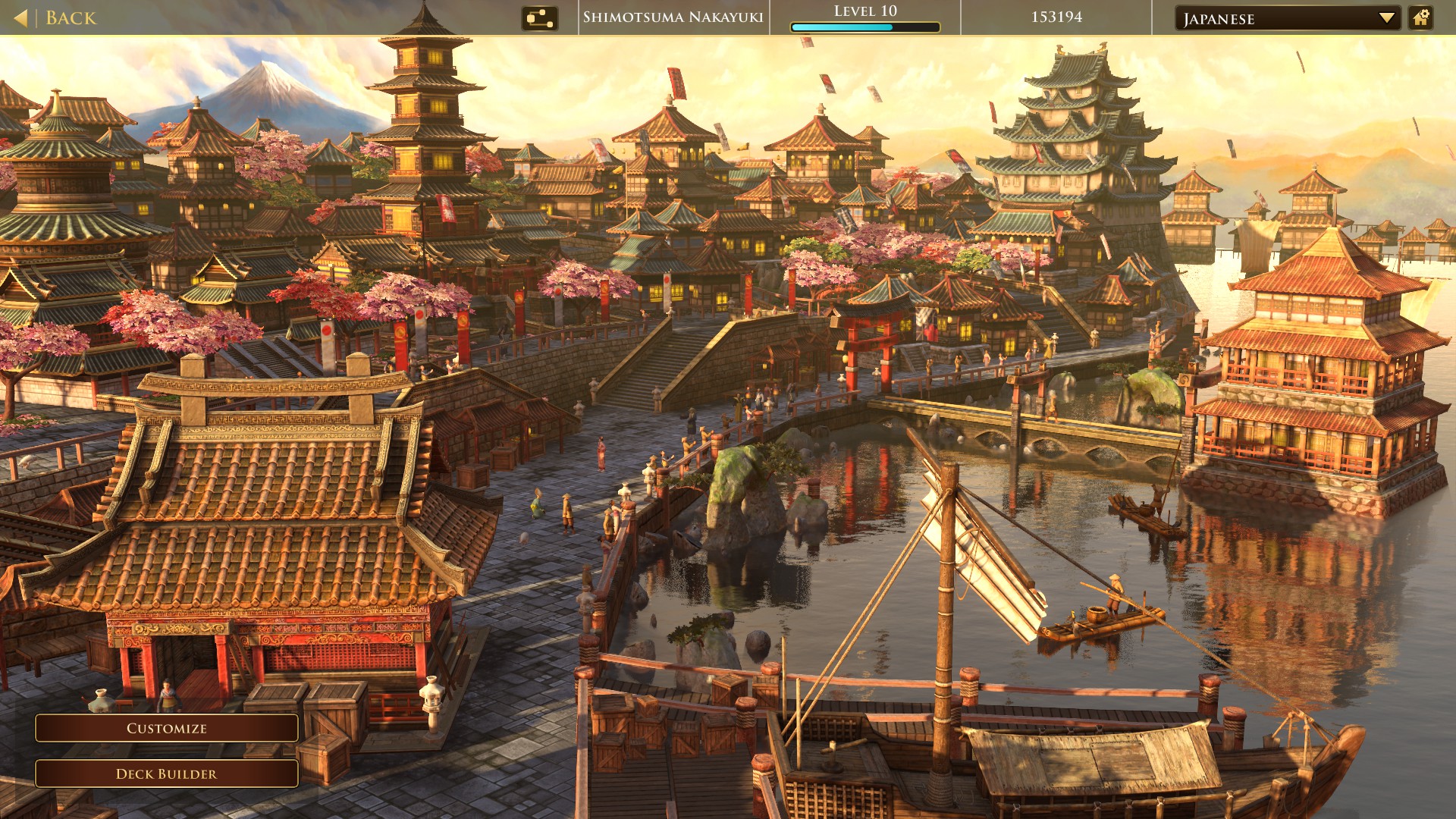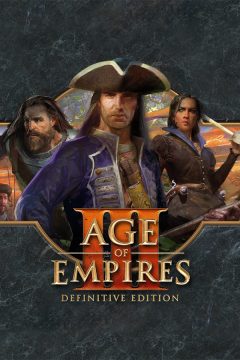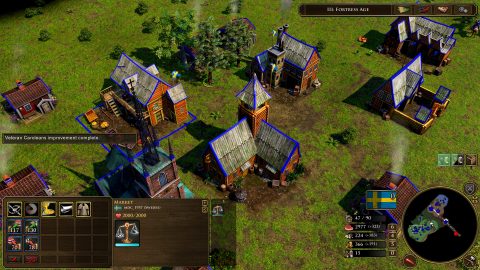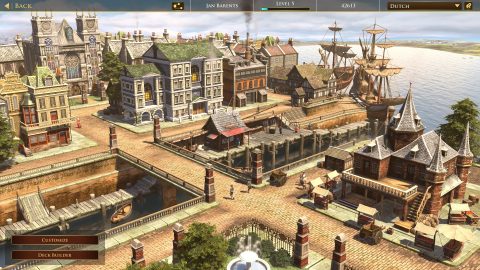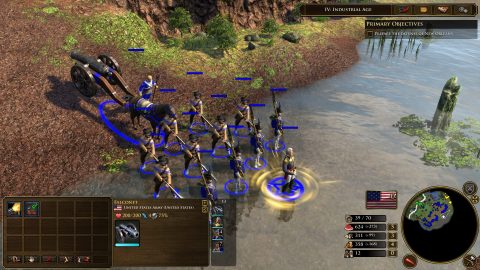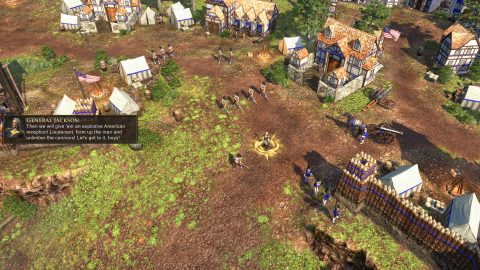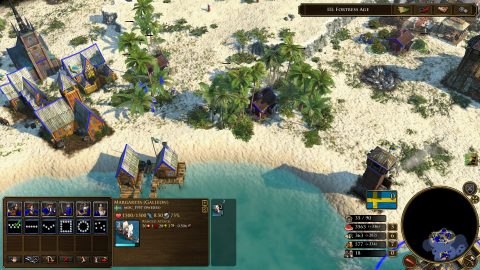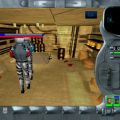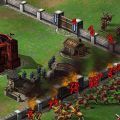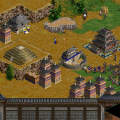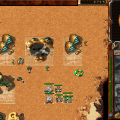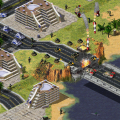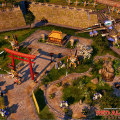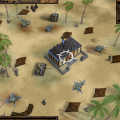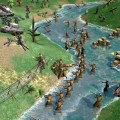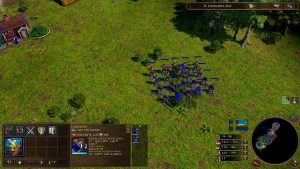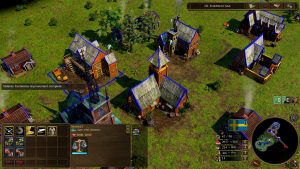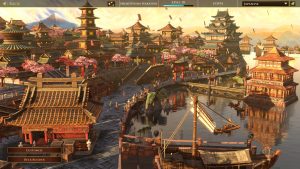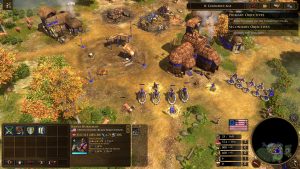- Age of Empires III: Definitive Edition
Released almost 15 years to the day after the original, Age of Empires III: Definitive Edition is proof that the once-underappreciated title has been vindicated in the eyes of RTS fans. Despite a rocky launch and controversy that could have snuffed it at the crib, over a year on, Tantalus Media, World’s Edge, and Forgotten Empires have done much to make this title worthy of the franchise Ensemble Studios forged back in 1997.
If that sounds like much praise, you wouldn’t be faulted for thinking so. After all, it’s been a long road leading up to its Steam release on October 15, 2020. The original Age of Empires III garnered a mixed reception among gamers back in the day, be it for the backdrop, creative decisions or gameplay mechanics like the Home City system. In addition, series co-creator Bruce Shelly had even referred to it in a 2011 interview as a disappointment, if not a “huge mistake.” At the same time, however, the game’s a solid entry in its own right. Not only has itgarnered a loyal following, inspiring a modding community and vibrant multiplayer scene that remain active to this day. It’s also brought newer fans to the storied saga. Even the current development team is emblematic. In addition to having Command and Conquer veteran Adam Isgreen in charge of World’s Edge, it’s worth noting how Forgotten Empires not only traces its origins back to a team of modders for Age of Empires II, but has also come to include ex-Ensemble Studios staff among its ranks.
With such a pedigree, does Definitive Edition actually live up to, if not surpass, Ensemble’s original? The short answer would be a resounding yes, though not without some birthing pains.
On the surface, there’s seemingly little difference from the 2005 version. Building upon the basic foundations of the franchise, Age of Empires III chronicles the pivotal changes of the late-15th to mid-19th Centuries: an era of discovery, colonization, revolution, and industrialization. These are reflected in the five Ages (Exploration, Commerce, Fortress, Industrial, Imperial), in how gameplay mechanics are streamlined –worker units, for instance, don’t require drop-off points for resource gathering – and in how combat generally transitions toward gunpowder-based warfare as you progress. The much-vaunted, and divisive, RPG-esque“Home City” feature is very much present, along with all the expansion packs: the Native American-centric The Warchiefs, and Big Huge Games’ The Asian Dynasties.
If you’re expecting this to be the exact same game with a new coat of paint, however, you’d be mistaken. For one, Definitive Edition adds in new civilizations to the original 14, with the Swedes and Inca available right at the onset. DLC, meanwhile, has introduced a fully fleshed-out United States, followed by the Ethiopians and Hausa with the August 2, 2021 release of The African Royals. Each of these factions plays as distinctly as the others, if not more so, whether it be the Incans being able to convert enemy units with their priestesses, America’s unique “age up” mechanic involving US States and special technologies, or Ethiopia being able to build monasteries on gold mines for bonuses. Beyond expanding the game’s scope even further beyond its initial focus on the New World, it’s clear that there’s a concerted attempt to surpass Age of Empires II in terms of variety, if not in numbers. With the inclusion of integrated mod support, it also means there’s a lot of replay value to be had.
The Home City mechanic, meanwhile, is also given an overhaul, which the developers have done a commendable job over. While largely functioning the same as before, the grinding required to unlock your nation’s entire shipment deck is eliminated altogether. Whether it’s faction-specific upgrades, a grenade launcher for Grenadier troops, or powerful reinforcements from the homeland, all those previously inaccessible cards are now laid bare for you to experiment and customize your own playstyle with. This isn’t to say that “leveling up” is pointless, as it still acts as a useful tool for ranking. Moreover, doing so this time around opens up a host of cosmetic upgrades for those cities; unlike the original, this has been extended to civilizations like the Japanese and Chinese, which previously never had those options. While it may still break the game’s pacing – even though the transitions are more fluid, just as before it can seem as though it’s existing in a vacuum – it’s about as good as it could possibly get.
Presentation-wise, the game does a good job retaining the original aesthetic while updating it for modern PCs. For its time, the original Age of Empires III was a visual feast, with its attention to detail, crisp water effects and expansive vistas. While the blooming effects and Havoc-based physics have been considerably toned down – no more debris flying halfway across the map, or rooftops that seem to glow like the sun – much the same could be said for Definitive Edition. Models are finely rendered, right down to the building signage, unit weaponry and planking on ships. The randomly-generated maps available in skirmish and multiplayer are as varied as ever, each with their own quirks and strategic value; The African Royals, in particular, features eye-catching landscapes and diverse natives ranging from Berbers to Somali raiders. The sound effects, be it the rumblings of cannon fire or the ambiance surrounding a bustling town, are similarly well-done in being immersive. To say nothing of how the game not only remasters the original soundtrack, but also gives it a crisp orchestral flair that doesn’t feel recycled.
This isn’t to ignore, either, how it includes a new “Historical Battles” mode similar to Age of Empires II. As the name implies, this is a series of one-shot scenarios based on various real-life events, such as the Ottoman capture of Algiers in 1516, and the establishment of Fort Duquesne amidst the Seven Years’ War, and the end of Ethiopia’s “Era of the Princes” in 1855. In addition to having production values comparable to any of the existing missions – complete with cutscenes and voiced characters – and avoiding Assassins’ Creed-style hijinks that many arcs in the original campaign had, they provide distinct mission objectives and challenges to achieve, adding a degree of replayability. As an added touch, they also have certain touches unique to each individual Battle, be it a playable Barbary faction, or having access to African units well before their proper debut in The African Royals. At their best, they give a welcome glimpse into snippets of world history not often talked about in popular culture, with evident care put into portraying those tales for the most part.
For the most part being the key term. The scenario depicting the 1815 Battle of New Orleans, in particular, shows a strange oversight in how Andrew Jackson, who historically led the defense of the city, is shown in-game with a generic “American General” label, something that doesn’t happen elsewhere in the mini-campaign. While this could be construed as an attempt to avoid controversy, it’s nonetheless jarring and misplaced. This only serves to highlight one blemish out of many that could have derailed this remaster right at the onset.
Despite the developers’ best efforts, the launch of Definitive Edition was far from smooth-sailing. The first few weeks saw several bugs and technical issues that hampered the experience. Music tracks could glitch out, wind up in loops, or cut off inexplicably. Skirmish AI and pathfinding didn’t quite function properly, either, while multiplayer matches – though taking much feedback from the community over the years – were prone to being dropped mid-game. In the case of a few unlucky gamers, there were even reports of crashes that went beyond game-breaking, and into wiping out their entire hard drives. While this could partially be ascribed to the turbulence COVID-19 wrought on production, it’s clear that the initial release wasn’t ready for primetime.
The updated UI and balancing, meanwhile, has had a mixed response from longtime fans. The interface’s design, rather than being sleek, can come across as clunky, if not confusing to those familiar with the more conventional layout of the original, or earlier Age of Empires titles for that matter. Some civilizations at launch, meanwhile, had a tendency to either be underutilized, or in the case of the Japanese and United States, being way overpowered. While not in themselves game-breaking, and can become easier to grasp over time, they could nonetheless come off as a proverbial curveball if you’ve played the 2005 version.
Then, there’s the elephant in the room: Definitive Edition made certain creative decisions that have invited accusations of political correctness. As revealed in a September 15, 2020 interview with cultural consultant Anthony Brave, attention was brought to how the Native American factions and indigenous cultures in general had been portrayed. Moreover, though Ensemble Studios had done a more than decent job featuring various native peoples in the original game, Brave brought up the unique Fire Pit structure as a problematic example of negative representation and how “it’s okay to utilize these kinds of images of Native people.”
In response to such feedback, the developers implemented a number of changes to the existing content. The Sioux and Iroquois, for instance, were renamed as the Lakota and Haudenosaunee respectively, using their indigenous names. In addition to the Fire Pit being replaced by a “Community Plaza” that serves a similar bonus-generating function, the aforementioned civilizations feature redone voicelines for greater authenticity, and jettisoned their ability to mine gold – instead, you have to build a “Tribal Marketplace” next to gold deposits for resource gathering – with the rationale being how mining’s a “form of exploitation of the land, and we would never treat our mother like that”; the Aztecs and Inca, however, were exempted as they never shared this worldview. This extends as well to how The Warchiefs’ Shadow campaign – set amidst the backdrop of the Indian Wars and Custer’s Last Stand in 1876 – was rewritten by Brave, notably giving the mixed-race Chayton Black a more rounded backstory and replacing Crazy Horse with a fictional elder as a mentor figure, due to how the initial storyline seemed to trivialize the famed chieftain.
This may have likely influenced some of the other deviations, from renaming “Plantations” as “Estates”, and rebranding the “Colonial Age” as the “Commerce Age”, to the omission of Andrew Jackson. While the idea of being more authentic and respectful seems admirable on paper, in practice it’s a misfire. The redone voices for the Lakota and Haudenosaunee, as well as the Inca, were shown to be woefully uneven, be it in how quiet some lines can be, or the apparent lack of energy compared to the original audio. Meanwhile, the reworked mechanics for the North American natives came off as more tacked-on than seamlessly integrated at launch, most exemplified by how awkward and lifeless the Community Plaza was. Which isn’t getting to how other civilizations like the utterly anachronistic Chinese weren’t given the same apparent “treatment”, further giving the impression of double-standards.
It’s not hard to see, then, how divisive Definitive Edition’s initial reception turned out to be. While media outlets at the time gave generally positive, with a 75% rating on Metacritic and 79% on Opencritic, the myriad technical issues were never far behind. As fans spent more time with it, discussions online were increasingly overshadowed by those bugs, including the hard drive-wiping crashes. These were further exasperated by the aforementioned creative decisions. Not only did they invite accusations of the developers being politically correct, but also led to the game becoming the target of heated culture war spats on both sides.
To call the fallout a mess would be an understatement, and had things remained that way, you’d be forgiven for thinking that Age of Empires III was dead in the water. Yet despite such controversy, this was far from the end.
To the developers’ credit, they weren’t blind to gamers’ dissatisfaction, nor were they content with how Definitive Edition turned out at launch. Over the following weeks and months, they’ve continually released several patches that have not only fixed many of the game’s problems, but also free new content alongside the DLC.
For one thing, the attention placed on the Lakota and Haudenosaunee has over time come to be extended to the other factions. Whether it’s the introduction of new Home City options, refinements to the Community Plaza and Tribal Marketplace – they’re not only functional this time, but also look much more seamless and vibrant – or something as simple as giving the European nations a culturally fitting “Tavern” in place of a Wild West saloon, do a lot in making the game feel more wholistic. Though not entirely resolved, with the Shadow campaign arc rewrite and Andrew Jackson omission still notably present, these have helped in easing concerns of political correctness.
This also extends to gameplay. Beyond just stabilizing code and additional features to the multiplayer suite, such as improved matchmaking, the developers have also made long-overdue balancing tweaks for the various civilizations, and added even more maps – including massive versions of existing ones for large-scale matches. At the same time, they’ve gone out of their way to provide special incentives through events, tournaments and unlockable skins. Granted, these haven’t brought the game to the same heights as Age of EmpiresII’s remaster in terms of popularity – with 5,060 concurrent players on Steam, as opposed to its predecessor’s 24, 561 for October 10, 2021. Nonetheless, combined with mod support,DefinitiveEdition’s succeeded in cultivating both a competitive scene, and a stable, yet growing community of its own.
The end result is a remaster that, over a year on from launch, has become much more than the sum of its parts. Though there still remain debates among fans over which entry is truly superior, you need only look athow the game’s overall Steam reviews have shifted dramatically from an almost 50/50 “Mixed” reception to a “Mostly Positive” 75% to see that the divisive vitriol that seemed to all but overshadow it is largely in the past. While this may be attributed to the developers’ continued support for the title and consumers, it’s still impressive how they’ve managed to build upon the foundations laid by Ensemble Studios, and in certain respects surpass them.
Given the circumstances, it’s not a stretch to say that this game has truly earned its Definitive Edition title. With how both the developers and fanbase are committed to seeing it succeed, its status for posterity as a worthy entry to the Age of Empires saga is all but assured.
